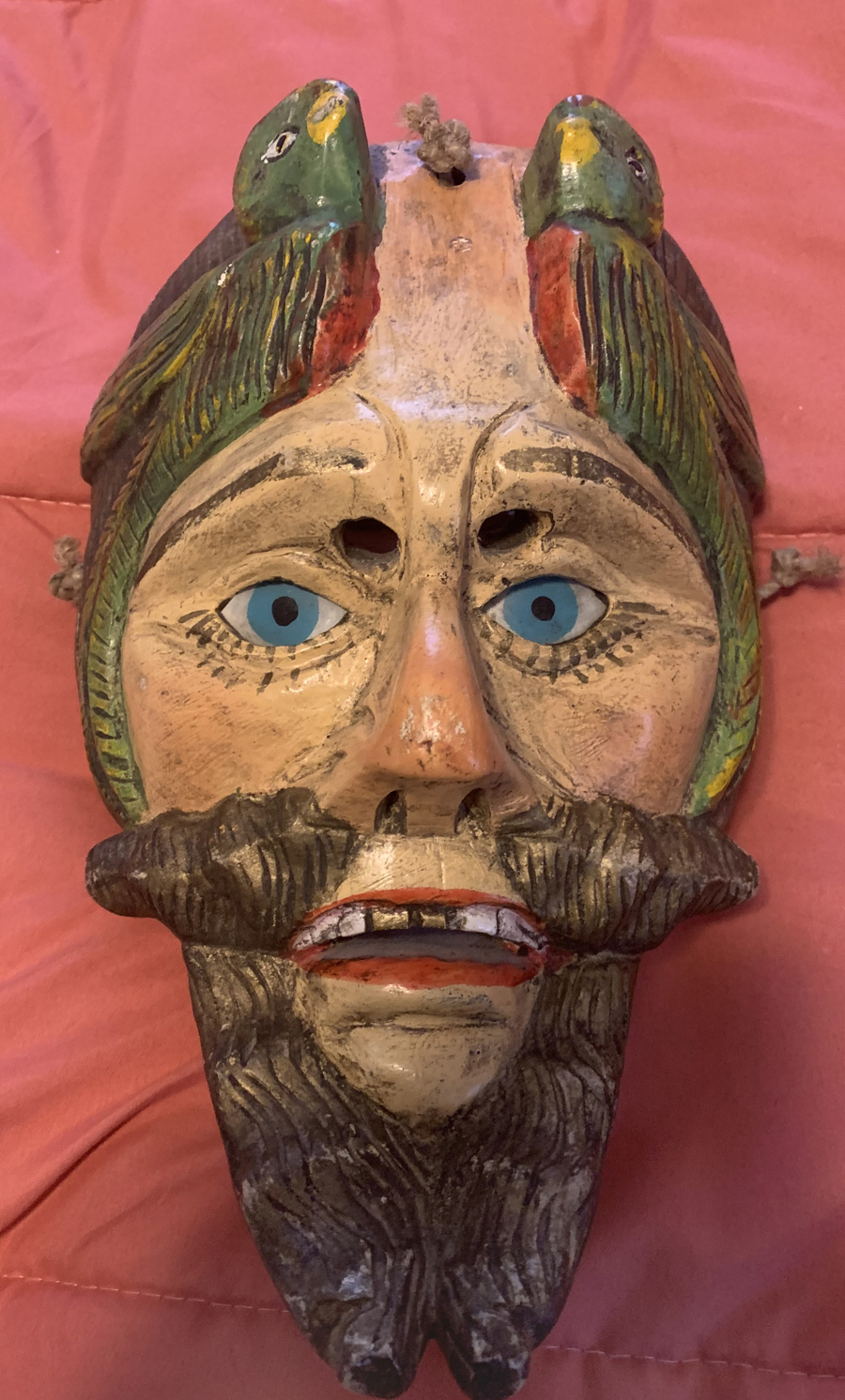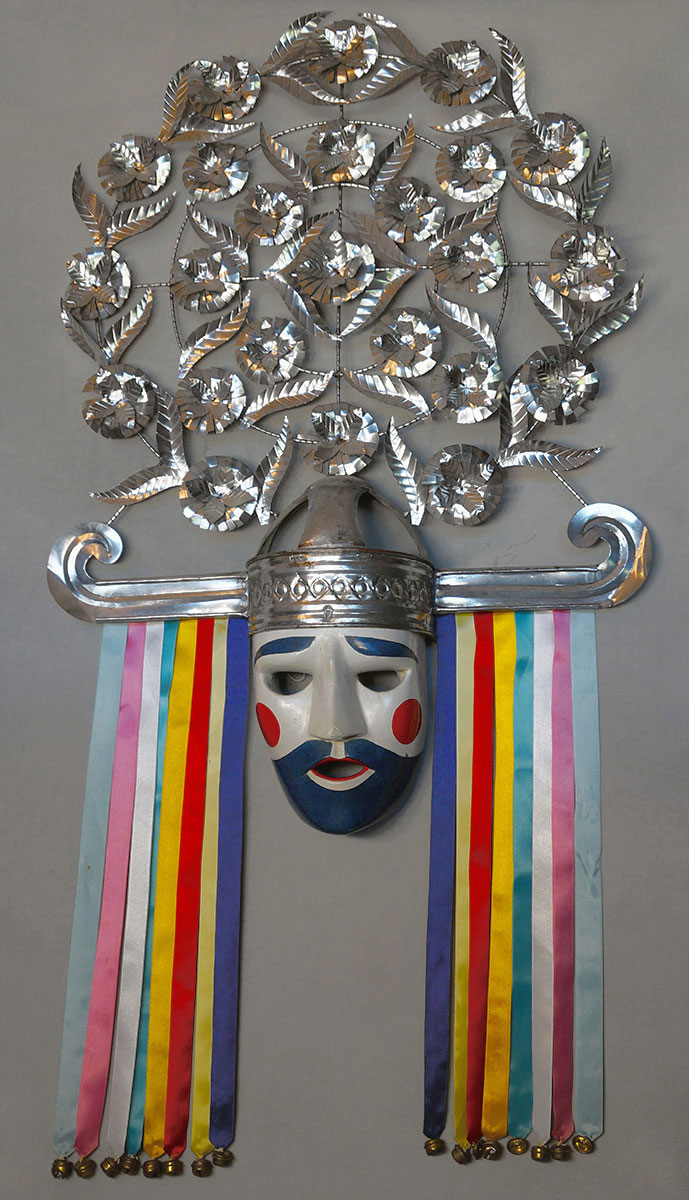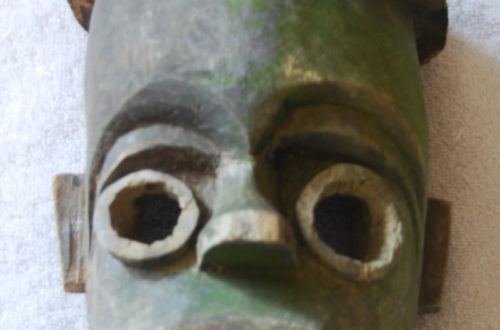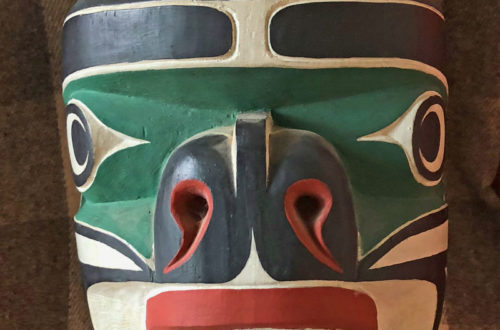 Q: I bought this mask about 13 years ago from a small antique store for $120 and realized it was Guatemalan but was confused about parrots and it being the white man and also wondered how old it might be and what it might be worth roughly. It is 10 1/2 ” by 7″ in size. Jenny, 1817
Q: I bought this mask about 13 years ago from a small antique store for $120 and realized it was Guatemalan but was confused about parrots and it being the white man and also wondered how old it might be and what it might be worth roughly. It is 10 1/2 ” by 7″ in size. Jenny, 1817
A: This colorful mask was made for The Dance of the Conquest, which has been used in Guatemalan culture to tell the legend of Pedro de Alvarado’s conquest of the indigenous people’s of Guatemala and the defeat of the last Mayan chief, Tecún Umán. In accordance with traditional styling Tecun is depicted here with two Quetzal birds adorning his face. According to the legend this bird was Tecun’s spirit guide and when he was in battle wept for his loss, covering it’s breast in his blood, giving the bird it’s red chest. The bird has since gone on to become a symbol of liberty. Tecun himself has been deemed a national hero of Guatemala, personifying dignity and bravery for the Guatemalans. This mask of Tecún Umán (ca. 1500–1524) helps commemorate National Hispanic Heritage Month, which runs from Sept. 15 to Oct. 15. One of the last rulers of the K’iche’Maya kingdom, Umán became Guatemala’s official national hero in 1960.
Made from wood and paint in the mid-20th century by a Guatemalan carver , this mask was probably sold to a tourist as a souvenir. It has been artificially aged. I would give it a C+.







One Comment
Jean
This mask has been artificially aged, indeed. What’s rather typical of fake aging is the back uniformly dark: this occurs when the surface has been waxed or painted. A real patina due to years of use is usually marked on the edges of the mask (where there’s a contact with dancer’s face) while the deep of the back side (behind eyes, nose and mouth) remains with more dirt than patina.